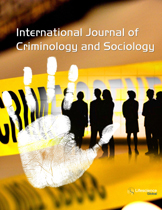ijcs
Abstract : 12-Step Programs to Reduce Illicit Drug Use
|
|
Abstract: Many treatments are not rigorously evaluated as to their effectiveness, and it is uncertain which types of interventions are more effective than others in reducing illicit drug use. The aim of this paper is to provide a systematic mapping of the research literature of the effectiveness of 12-step programs in reducing illicit drug use. A systematic literature search was conducted based on 17 international and Nordic bibliographic databases. A total of 15,993 references were screened, and eleven unique studies were finally included in this mapping. The included studies demonstrated conflicting results regarding the effectiveness of the 12-step treatment and TSF in reducing individuals’ drug use. Two studies reported a positive effect of the TSF treatment compared to the comparison conditions in reducing drug use. Six studies reported no differences between the 12-step program and the comparison condition, and the remaining three studies reported a greater effect of the comparison condition. However, the included studies demonstrate that, in general, 12-step programs and the comparison conditions have some positive effects in reducing drug use and supporting abstinence among the participants. Keywords: 12-step, TSF, illicit drugs, mapping, literature review.Download Full Article |
Abstract : DNA Evidence: Examining Police Officers’ Knowledge of Handling Procedures in a Mid-Size Department
|
|
Abstract: Studies of policing dominate the criminal justice literature but very few studies report empirical data regarding police handling of evidence, specifically including DNA evidence. Given that evidence handling is crucial in the investigation and prosecution of criminal offenders, this gap in the literature is surprising. The present paper addresses the quality of evidence handling in a mid-size police department in the northwest United States. Three surveys – two of officers within the department and one of state crime lab managers who test and examine evidence samples provided to them by local police departments – suggest that police offers in this mid-size city are only modestly familiar with proper evidence handling procedures, including those procedures regarding the collection, packaging, transportation and submission of possible DNA evidence. Keywords: Evidence, evidence handling, DNA evidence, DNA evidence handling, evidence collection, crime scene procedures.Download Full Article |
Abstract : Gender Differences in Substance Use Across Marital Statuses
|
|
Abstract: Previous studies have noted that the relationship status of adults is substantially linked with levels of substance use. Understandably, the marital status of adults continues well beyond its initial phases, sometimes resulting in divorce, separation, or remarriage. This study seeks to extend our understanding of the linkages between marital status and substance use among adults. Using data from the 2012 National Survey on Drug Use and Health, we examine the substance use levels among a nationally representative sample of 14,715 adults. The analyses indicate that, for both females and males, marriage is, indeed, associated with lower levels of alcohol, cigarette, and marijuana use. Divorced individuals reported the highest levels of substance use. Interestingly, remarried individuals report higher levels of substance use than their counterparts in their first marriage, yet remarried men and women report lower levels of usage than do those who are currently divorced. Contextual and individual characteristics also yield several interesting patterns. In particular, distress and depression are shown to be much stronger predictors of substance use levels among divorced and remarried individuals. Divorced and remarried women, as compared to their male counterparts, are shown to be significantly more influenced by their employment status. The implications of this study are discussed, as are the potentially reciprocal nature of marital status and substance use. Keywords: Substance use, marriage, divorce, remarriage, gender.Download Full Article |
Abstract : Morality, Rationality and Academic Dishonesty: A Partial Test of Situational Action Theory
|
|
Abstract: This study uses self-report survey data from a sample of college students to provide a partial test of Wikstrӧm’s situational action theory (2010a) by examining the extent, if any, to which the effects of perceptual deterrence on academic dishonesty are moderated by personal morality. The findings show that both personal morality and perceived certainty of formal sanctions are inversely associated with cheating; however, the deterrent effect of high perceived certainty of formal sanctions is not greater among those with weak moral prohibitions against cheating as predicted by Wikstrӧm and observed by Svensson (2015) in an earlier test of Wikstrӧm’s situational action theory. Keywords: Academic Dishonesty, Morality, Formal Deterrence, Situational Action Theory.Download Full Article |































